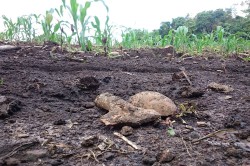Evolution and adaptation in fungi
One of the central goals of evolutionary biology is to understand the genetic basis of adaptation. Fungi are used for this work as their genomes are small and dense, but there can be difficulties in identifying adaptive phenotypes beyond simple metabolic traits. Fortunately, advances in high-throughput genetic sequencing have enabled the reverse adaptive genetics approach. This allows scientists to scan genomes and identify genes with unusual evolutionary histories and to identify environmental factors consistent with the genes and test the hypothesis through genetic manipulation. The EU-funded GEDINDIS (Genomics of ecological divergence in the fungal species Neurospora discreta) project studied how the N. discreta (which is found on dead plant matter following fires) is separating into more than one species. Scientists collected 52 samples of N. discreta from 7 locations in Asia, Europe and North America. DNA was extracted from these samples and sequenced using new, high-throughput sequencing techniques. Researchers constructed a data analysis pipeline using free bioinformatics software and used it to analyse the huge quantities of data generated by sequencing. Seeking genetic evidence of speciation between different populations, they found that samples from Alaska and the EU were closely related. Even more interestingly, there was evidence that two distinct populations exist in Washington state, but they are not hybridising or interbreeding. Scientists were also able to determine that the differentiation occurred around 440 000 generations ago in these populations. They also investigated whether these different populations can interbreed successfully, which would indicate whether the isolation was due to the environment or genetic factors. the project highlighted the importance of genetic exchanges between closely related taxa to the evolution of fungal genomes. It also supported the role of geographical isolation as a driver of diversification in saprobic fungi, which live on dead and decayed organic material. GEDINDIS challenged the universally held view derived from animal and plant studies regarding the evolutionary significance of gene flow between species. The project advanced understanding of fungal genomics and shed light on the mechanisations of speciation and the evolutionary response to global change. Therefore, the work could have far-reaching effects on agriculture, forestry and conservation biology.







